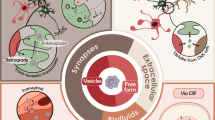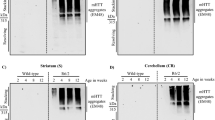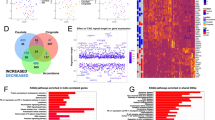Abstract
Huntington's disease (HD) is a progressive neurodegenerative disorder caused by a mutation in the gene huntingtin and characterized by motor, cognitive and psychiatric symptoms. Huntingtin contains a CAG repeat in exon 1. An expansion of this CAG repeat above 35 results in misfolding of Huntingtin, giving rise to protein aggregates and neuronal cell death. There are several transgenic HD mouse models that reproduce most of the features of the human disorder, for example protein inclusions, some neurodegeneration as well as motor and cognitive symptoms. At the same time, a subgroup of the HD transgenic mouse models exhibit dramatically reduced susceptibility to excitotoxicity. The mechanism behind this is unknown. Here, we review the literature regarding this phenomenon, attempt to explain what protein domains are crucial for this phenomenon and point toward a putative mechanism. We suggest, that the C-terminal domain of exon 1 Huntingtin, namely the proline rich domain, is responsible for mediating a neuroprotective effect against excitotoxicity. Furthermore, we point out the possible importance of this mechanism for future therapies in neurological disorders that have been suggested to be associated with excitotoxicity, for example Alzheimer's disease, Parkinson's disease and amyotrophic lateral sclerosis.
Similar content being viewed by others
Log in or create a free account to read this content
Gain free access to this article, as well as selected content from this journal and more on nature.com
or
Abbreviations
- CBS:
-
cystathionine beta-synthase
- FIP2:
-
Rab11 family-interacting protein 2
- GRB2:
-
growth factor receptor-bound protein 2
- HD:
-
Huntington's disease
- HIP1:
-
huntingtin interacting protein 1
- HIP14:
-
huntingtin interacting protein 14
- N-CoR:
-
nuclear receptor corepressor 1
- NMDA:
-
N-methyl-D-aspartic acid
- PACSIN1:
-
protein kinase C and casein kinase substrate in neurons protein 1
- poly-Q:
-
polyglutamine
- PSD95:
-
postsynaptic density protein 95
- QA:
-
quinolinic acid
- RasGAP:
-
RAS-GTPase-activating protein
- SH3:
-
Src-homology 3
References
The Huntington's Disease Collaborative Research Group. A novel gene containing a trinucleotide repeat that is expanded and unstable on Huntington's disease chromosomes. Cell 1993; 72: 971–983.
Vonsattel JP, DiFiglia M . Huntington disease. J Neuropathol Exp Neurol 1998; 57: 369–384.
Vonsattel JP, Stevens TJ, Ferrante RJ, Bird ED, Richardson Jr EP . Neuropathological classification of Huntington's disease. J Neuropath Exp Neurol 1985; 44: 559–577.
Ferrante RJ, Beal MF, Richardson Jr EP, Bird ED, Martin JB . Selective sparing of a class of striatal neurons in Huntington's disease. Science 1985; 230: 561–563.
Gutekunst CA, Levey AI, Heilman CJ, Whaley WL, Yi H, Nash NR et al. Identification and localization of huntingtin in brain and human lymphoblastoid cell lines with anti-fusion protein antibodies. Proc Natl Acad Sci USA 1995; 92: 8710–8714.
Sapp E, Schwarz C, Chase K, Bhide PG, Young AB, Penney J et al. Huntingtin localization in brains of normal and Huntington's disease patients. Ann Neurol 1997; 42: 604–612.
Qin ZH, Wang Y, Sapp E, Cuiffo B, Wanker E, Hayden MR et al. Huntingtin bodies sequester vesicle-associated proteins by a polyproline-dependent interaction. J Neurosci 2004; 24: 269–281.
Landles C, Bates GP . Huntingtin and the molecular pathogenesis of Huntington's disease. Fourth in molecular medicine review series. EMBO Rep 2004; 5: 958–963.
Arrasate M, Mitra S, Schweitzer ES, Segal MR, Finkbeiner S . Inclusion body formation reduces levels of mutant huntingtin and the risk of neuronal death. Nature 2004; 431: 805–810.
Arundine M, Tymianski M . Molecular mechanisms of calcium-dependent neurodegeneration in excitotoxicity. Cell Calcium 2003; 34: 325–337.
Schwarcz R, Whetsell Jr WO, Mangano RM . Quinolinic acid: an endogenous metabolite that produces axon-sparing lesions in rat brain. Science 1983; 219: 316–318.
Hansson O, Petersen A, Leist M, Nicotera P, Castilho RF, Brundin P . Transgenic mice expressing a Huntington's disease mutation are resistant to quinolinic acid-induced striatal excitotoxicity. Proc Natl Acad Sci USA 1999; 96: 8727–8732.
Hansson O, Guatteo E, Mercuri NB, Bernardi G, Li XJ, Castilho RF et al. Resistance to NMDA toxicity correlates with appearance of nuclear inclusions, behavioural deficits and changes in calcium homeostasis in mice transgenic for exon 1 of the huntington gene. Eur J Neurosci 2001; 14: 1492–1504.
Snell RG, MacMillan JC, Cheadle JP, Fenton I, Lazarou LP, Davies P et al. Relationship between trinucleotide repeat expansion and phenotypic variation in Huntington's disease. Nat Genet 1993; 4: 393–397.
Jarabek BR, Yasuda RP, Wolfe BB . Regulation of proteins affecting NMDA receptor-induced excitotoxicity in a Huntington's mouse model. Brain 2004; 127: 505–516.
Slow EJ, Graham RK, Osmand AP, Devon RS, Lu G, Deng Y et al. Absence of behavioral abnormalities and neurodegeneration in vivo despite widespread neuronal huntingtin inclusions. Proc Natl Acad Sci USA 2005; 102: 11402–11407.
Leavitt BR, Raamsdonk JM, Shehadeh J, Fernandes H, Murphy Z, Graham RK et al. Wild-type huntingtin protects neurons from excitotoxicity. J Neurochem 2006; 96: 1121–1129.
Graham RK, Deng Y, Slow EJ, Haigh B, Bissada N, Lu G et al. Cleavage at the caspase-6 site is required for neuronal dysfunction and degeneration due to mutant huntingtin. Cell 2006; 125: 1179–1191.
Zeron MM, Hansson O, Chen N, Wellington CL, Leavitt BR, Brundin P et al. Increased sensitivity to N-methyl-D-aspartate receptor-mediated excitotoxicity in a mouse model of Huntington's disease. Neuron 2002; 33: 849–860.
Shehadeh J, Fernandes HB, Zeron Mullins MM, Graham RK, Leavitt BR, Hayden MR et al. Striatal neuronal apoptosis is preferentially enhanced by NMDA receptor activation in YAC transgenic mouse model of Huntington disease. Neurobiol Dis 2006; 21: 392–403.
Petersen A, Mani K, Brundin P . Recent advances on the pathogenesis of Huntington's disease. Exp Neurol 1999; 157: 1–18.
Hansson O, Castilho RF, Korhonen L, Lindholm D, Bates GP, Brundin P . Partial resistance to malonate-induced striatal cell death in transgenic mouse models of Huntington's disease is dependent on age and CAG repeat length. J Neurochem 2001; 78: 694–703.
Petersen A, Hansson O, Puschban Z, Sapp E, Romero N, Castilho RF et al. Mice transgenic for exon 1 of the Huntington's disease gene display reduced striatal sensitivity to neurotoxicity induced by dopamine and 6-hydroxydopamine. Eur J Neurosci 2001; 14: 1425–1435.
Hickey MA, Morton AJ . Mice transgenic for the Huntington's disease mutation are resistant to chronic 3-nitropropionic acid-induced striatal toxicity. J Neurochem 2000; 75: 2163–2171.
Morton AJ, Leavens W . Mice transgenic for the human Huntington's disease mutation have reduced sensitivity to kainic acid toxicity. Brain Res Bull 2000; 52: 51–59.
MacGibbon GA, Hamilton LC, Crocker SF, Costain WJ, Murphy KM, Robertson HA et al. Immediate-early gene response to methamphetamine, haloperidol, and quinolinic acid is not impaired in Huntington's disease transgenic mice. J Neurosci Res 2002; 67: 372–378.
Schiefer J, Alberty A, Dose T, Oliva S, Noth J, Kosinski CM . Huntington's disease transgenic mice are resistant to global cerebral ischemia. Neurosci Lett 2002; 334: 99–102.
Cornett J, Cao F, Wang CE, Ross CA, Bates GP, Li SH et al. Polyglutamine expansion of huntingtin impairs its nuclear export. Nat Genet 2005; 37: 198–204.
Sittler A, Walter S, Wedemeyer N, Hasenbank R, Scherzinger E, Eickhoff H et al. SH3GL3 associates with the Huntingtin exon 1 protein and promotes the formation of polygln-containing protein aggregates. Mol Cell 1998; 2: 427–436.
Liu YF, Deth RC, Devys D . SH3 domain-dependent association of huntingtin with epidermal growth factor receptor signaling complexes. J Biol Chem 1997; 272: 8121–8124.
Steffan JS, Kazantsev A, Spasic-Boskovic O, Greenwald M, Zhu YZ, Gohler H et al. The Huntington's disease protein interacts with p53 and CREB-binding protein and represses transcription. Proc Natl Acad Sci USA 2000; 97: 6763–6768.
Modregger J, DiProspero NA, Charles V, Tagle DA, Plomann M . PACSIN 1 interacts with huntingtin and is absent from synaptic varicosities in presymptomatic Huntington's disease brains. Hum Mol Genet 2002; 11: 2547–2558.
Sun Y, Savanenin A, Reddy PH, Liu YF . Polyglutamine-expanded huntingtin promotes sensitization of N-methyl-D-aspartate receptors via post-synaptic density 95. J Biol Chem 2001; 276: 24713–24718.
Boutell JM, Wood JD, Harper PS, Jones AL . Huntingtin interacts with cystathionine beta-synthase. Hum Mol Genet 1998; 7: 371–378.
Singaraja RR, Hadano S, Metzler M, Givan S, Wellington CL, Warby S et al. HIP14, a novel ankyrin domain-containing protein, links huntingtin to intracellular trafficking and endocytosis. Hum Mol Genet 2002; 11: 2815–2828.
Wanker EE, Rovira C, Scherzinger E, Hasenbank R, Walter S, Tait D et al. HIP-I: a huntingtin interacting protein isolated by the yeast two-hybrid system. Hum Mol Genet 1997; 6: 487–495.
Hattula K, Peranen J . FIP-2, a coiled-coil protein, links Huntingtin to Rab8 and modulates cellular morphogenesis. Curr Biol 2000; 10: 1603–1606.
Boutell JM, Thomas P, Neal JW, Weston VJ, Duce J, Harper PS et al. Aberrant interactions of transcriptional repressor proteins with the Huntington's disease gene product, huntingtin. Hum Mol Genet 1999; 8: 1647–1655.
Lowenstein EJ, Daly RJ, Batzer AG, Li W, Margolis B, Lammers R et al. The SH2 and SH3 domain-containing protein GRB2 links receptor tyrosine kinases to ras signaling. Cell 1992; 70: 431–442.
Ellis CMM, McCormick F, Pawson T . Phosphorylation of GAP and GAP-associated proteins by transforming and mitogenic tyrosine kinases. Nature 1990; 343: 377–381.
Henkemeyer MRD, Holmyard DP, Puri MC, Mbamula G, Harpal K, Shih TS et al. Vascular system defects and neuronal apoptosis in mice lacking ras GTPase-activating protein. Nature 1995; 377: 695–701.
Lievens JC, Rival T, Iche M, Chneiweiss H, Birman S . Expanded polyglutamine peptides disrupt EGF receptor signaling and glutamate transporter expression in Drosophila. Hum Mol Genet 2005; 14: 713–724.
Petersen AA, Larsen KE, Behr GG, Romero N, Przedborski S, Brundin P et al. Brain-derived neurotrophic factor inhibits apoptosis and dopamine-induced free radical production in striatal neurons but does not prevent cell death. Brain Res Bull 2001; 56: 331–335.
Petersen A, Brundin P . Effects of ciliary neurotrophic factor on excitotoxicity and calcium-ionophore A23187-induced cell death in cultured embryonic striatal neurons. Exp Neurol 1999; 160: 402–412.
Kitagawa K, Matsumoto M, Tagaya M, Hata R, Ueda H, Niinobe M et al. ‘Ischemic tolerance’ phenomenon found in the brain. Brain Res 1990; 528: 21–24.
Bond A, Lodge D, Hicks CA, Ward MA, O'Neill MJ . NMDA receptor antagonism, but not AMPA receptor antagonism attenuates induced ischaemic tolerance in the gerbil hippocampus. Eur J Pharmacol 1999; 380: 91–99.
Grabb MC, Choi DW . Ischemic tolerance in murine cortical cell culture: critical role for NMDA receptors. J Neurosci 1999; 19: 1657–1662.
Kato H, Liu Y, Araki T, Kogure K . MK-801, but not anisomycin, inhibits the induction of tolerance to ischemia in the gerbil hippocampus. Neurosci Lett 1992; 139: 118–121.
Saydoff JA, Garcia RA, Browne SE, Liu L, Sheng J, Brenneman D et al. Oral uridine pro-drug PN401 is neuroprotective in the R6/2 and N171-82Q mouse models of Huntington's disease. Neurobiol Dis 2006; 24: 455–465.
Dedeoglu A, Ferrante RJ, Andreassen OA, Dillmann WH, Beal MF . Mice overexpressing 70-kDa heat shock protein show increased resistance to malonate and 3-nitropropionic acid. Exp Neurol 2002; 176: 262–265.
McBride JL, Ramaswamy S, Gasmi M, Bartus RT, Herzog CD, Brandon EP et al. Viral delivery of glial cell line-derived neurotrophic factor improves behavior and protects striatal neurons in a mouse model of Huntington's disease. Proc Natl Acad Sci USA 2006; 103: 9345–9350.
Jin K, LaFevre-Bernt M, Sun Y, Chen S, Gafni J, Crippen D et al. FGF-2 promotes neurogenesis and neuroprotection and prolongs survival in a transgenic mouse model of Huntington's disease. Proc Natl Acad Sci USA 2005; 102: 18189–18194.
Ferrante RJ, Ryu H, Kubilus JK, D'Mello S, Sugars KL, Lee J et al. Chemotherapy for the brain: the antitumor antibiotic mithramycin prolongs survival in a mouse model of Huntington's disease. J Neurosci 2004; 24: 10335–10342.
Acknowledgements
We thank Ruben Smith and Mark Denham as well as the anonymous reviewers for helpful comments on the manuscript and Denis Soulet for support with artwork. TZ is supported by The Nordic Centre of Excellence Programme in Molecular Medicine 2004–2009 entitled ‘Neurodegeneration’.
Author information
Authors and Affiliations
Corresponding author
Additional information
Edited by M Deshmukh
Rights and permissions
About this article
Cite this article
Zuchner, T., Brundin, P. Mutant huntingtin can paradoxically protect neurons from death. Cell Death Differ 15, 435–442 (2008). https://doi.org/10.1038/sj.cdd.4402261
Received:
Revised:
Accepted:
Published:
Issue date:
DOI: https://doi.org/10.1038/sj.cdd.4402261
Keywords
This article is cited by
-
Antagonistic pleiotropy in mice carrying a CAG repeat expansion in the range causing Huntington’s disease
Scientific Reports (2019)
-
Huntington’s disease: the coming of age
Journal of Genetics (2018)
-
Neurodegenerative processes in Huntington's disease
Cell Death & Disease (2011)



